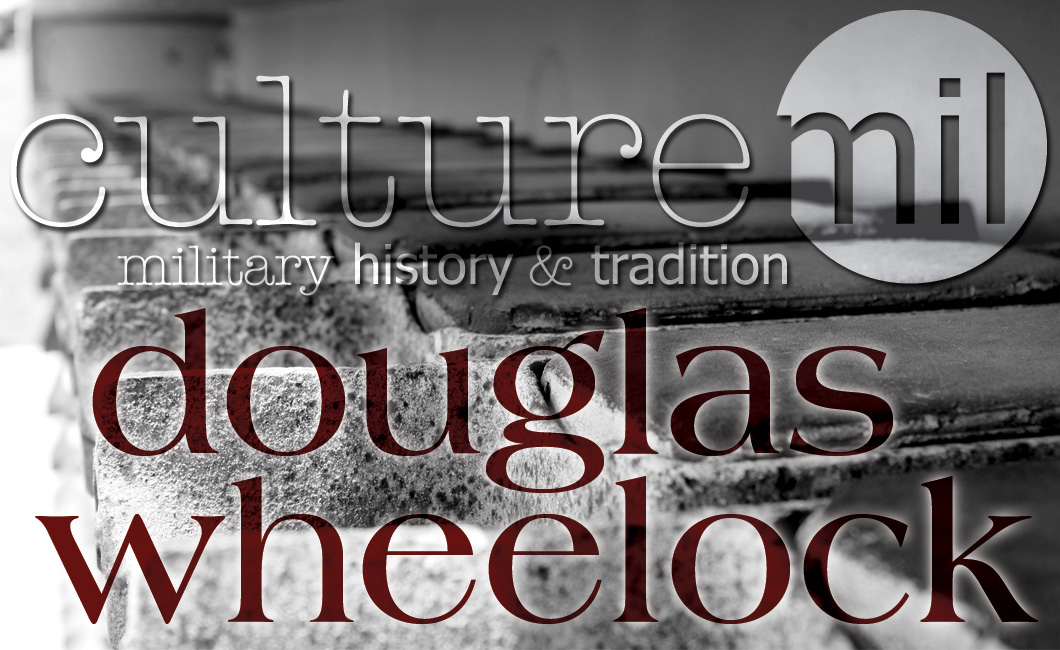- http://www.jsc.nasa.gov/Bios/htmlbios/wheelock.pdf
- http://mentalfloss.com/article/13041/11-things-you-might-not-know-about-us-army
- https://en.wikipedia.org/wiki/Douglas_H._Wheelock
Written by Jenifer Chrisman on November 15, 2016.
“I hope we never lose our sense of wonder. A passion for exploration and discovery is a noble legacy to leave to our children.”
– Colonel Douglas Wheelock
Airborne wings. Air Assault wings. Astronaut wings.
Born May 5, 1960, in Binghamton, New York, Douglas Wheelock attended West Point where he received a Bachelor of Science, Applied Science and Engineering and Georgia Tech where he received a Master of Aerospace Engineering (in the areas of flight stability and control, hypersonic and high-temperature gas dynamics and robotics) and Science. He received his commission as a Second Lieutenant from West Point in May of 1983 in the Army Infantry and he entered flight school in 1984, graduating top of his class. He became an Army Aviator in September of that year.
Wheelock served in the Ninth U.S. Cavalry in the Pacific Theater as a combat aviation Section Leader, Platoon Leader, Company Executive Officer, Battalion Operations Officer and Commander of an Air Cavalry Troop. Later, as an Advanced Weapons Research and Development Engineer, he was assigned to the Aviation Directorate of Combat Developments.
After graduating from the U.S. Naval Test Pilot School, Class 104, Wheelock was assigned to the Army Aviation Technical Test Center (ATTC) as an Experimental Test Pilot focused on surveillance systems and tactical reconnaissance. He then served as Division Chief for testing of Army Scout/Attack aircraft and weapons systems, Division Chief for fixed-wing testing of airborne signal and imagery intelligence systems and completed his military career as the Commander of the U.S. Army Space & Missile Defense Command - NASA Detachment.
A veteran of 38 combat missions and three combat tours during Operation Enduring Freedom, Wheelock has logged more than 7,000 flight hours, is a dual-rated Master Army Aviator and has an FAA-rated commercial pilot license (single- and multi-engine land craft, rotorcraft and gliders). He also is a graduate of the Infantry and Aviation Officer Advanced Courses, the Material Acquisition Management Course, the Army Airborne and Air Assault Courses, the U.S. Army Command and General Staff College and the Combined Arms Services Staff School.
In August of 1998 Colonel Wheelock reported for Astronaut Candidate Training and was assigned as a Russian Liaison to the Astronaut Office International Space Station Operations Branch. In 2001, Wheelock became the primary contact for all crew needs for the International Space Station Expedition 2 and Expedition 4 as he assumed the role of Crew Support Astronaut.
Wheelock was assigned as Capsule Communicator (CAPCOM) to Mission Control in Houston in August of 2002 and was the lead CAPCOM for ISS Expedition 8. In January of 2005 he became NASA’s Director of Operations – Russia at Gagarin Cosmonaut Training Center (GCTC) in Star City, Russia.
Wheelock completed a 10-day undersea mission in the NASA Extreme Environments Mission Operations (NEEMO) program aboard the National Undersea Research Center’s Aquarius habitat. He has flown aboard the space shuttle, STS-120 Discovery (October 23- November 7, 2007) launched from and returned to Kennedy Space Center, Florida, where Nodule 2 module Harmony was delivered to the International Space Station. The mission consisted of 238 orbits, traveling 6.2 million miles. He flew on the Soyuz TMA 23S Olympus/International Space Station Expedition 24/25 (June 15- November 25, 2010) as a Flight Engineer for Expedition 24 and assumed command of the station during Expedition 25. The mission lasted 163 days.
To date, Colonel Wheelock has conducted 6 spacewalks (totaling 43 hour and 30 minutes) and spent more than 178 days in space. Added to his list of accomplishments he has received numerous awards and special honors.:
AWARDS: Defense Superior Service Medal; Legion of Merit Medal; Defense Meritorious Service Medal; Meritorious Service Medal (First Oak Leaf Cluster); Air Medal; Army Commendation Medal; Army Achievement Medal (First Oak Leaf Cluster); NASA Distinguished Service Medal; NASA Space Flight Medal (second award); Army Good Conduct Medal; National Defense Service Medal (First Bronze Star); Afghanistan Campaign Medal (two Campaign Stars); Global War on Terrorism Expeditionary Medal; Global War on Terrorism Service Medal; Korea Defense Service Medal; NATO Medal (second award); Army Service Ribbon; Overseas Service Ribbon; Airborne Wings; Air Assault Wings; Master Army Astronaut Wings; Air Force Space and Missile Badge; Air Force Master Space Badge.
SPECIAL HONORS: Russian Medal of Merit for Space Exploration (2012); Doctor of Science (honoris causa), Oklahoma Christian University (2012); American Red Cross Hero in Space Award (2010); Fédération Aéronautique Internationale Yuri Gagarin Gold Medal Award (2010); American Astronautical Society Flight Achievement Award (2008); NASA Superior Accomplishment Award (2002, 2004, 2005 and 2008); Order of St. Michael (Bronze Award) from the Army Aviation Association of America (2007); NASA Group Achievement Awards: Russian Liaison Support Team (2001) and Global Positioning System (1997); Gamble Award for Excellence in Experimental Flight Testing (1995); Team Leader of the Georgia Tech Aerial Robotics Design Team (1992); Veterans of Foreign Wars Outstanding Spokesman for Freedom (1990); U.S. Jaycees Ten Outstanding Young Men of America (1989); 25th Infantry Division Flight Safety Award (1986 and 1989); Distinguished Graduate of the U.S. Army Flight Training Course (1984). Member of the Society of Experimental Test Pilots, the Society of American Military Engineers, the Association of the United States Army, the Army Aviation Association of America, the West Point Association of Graduates and the Georgia Tech Academy of Distinguished Engineering Alumni (2007).
Sources:




